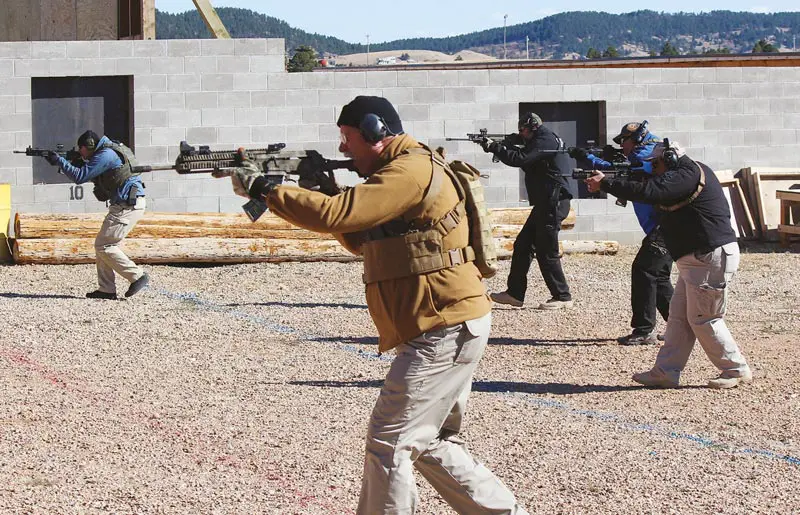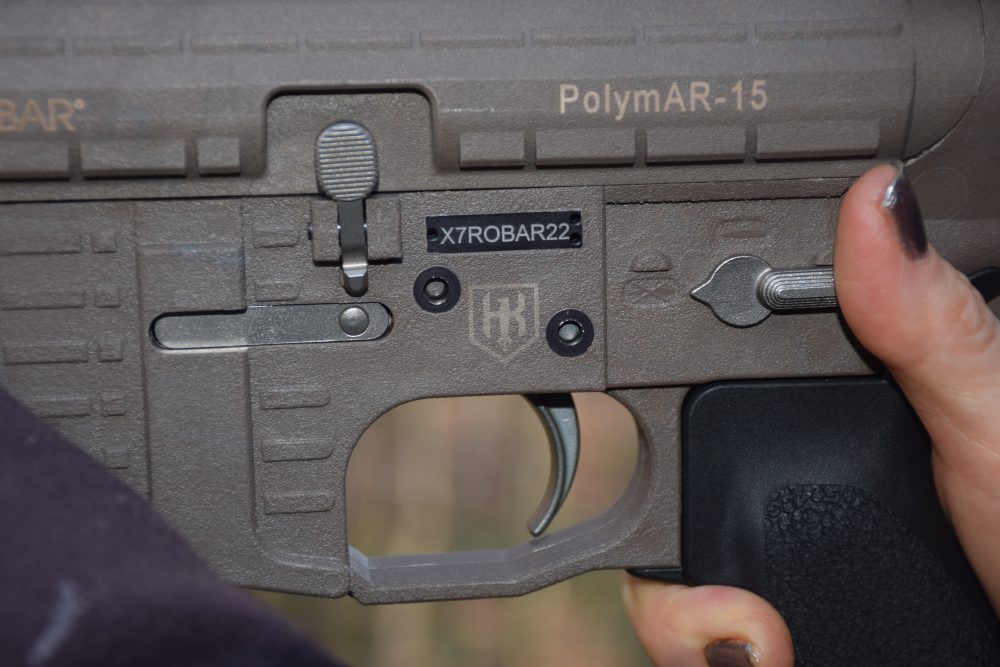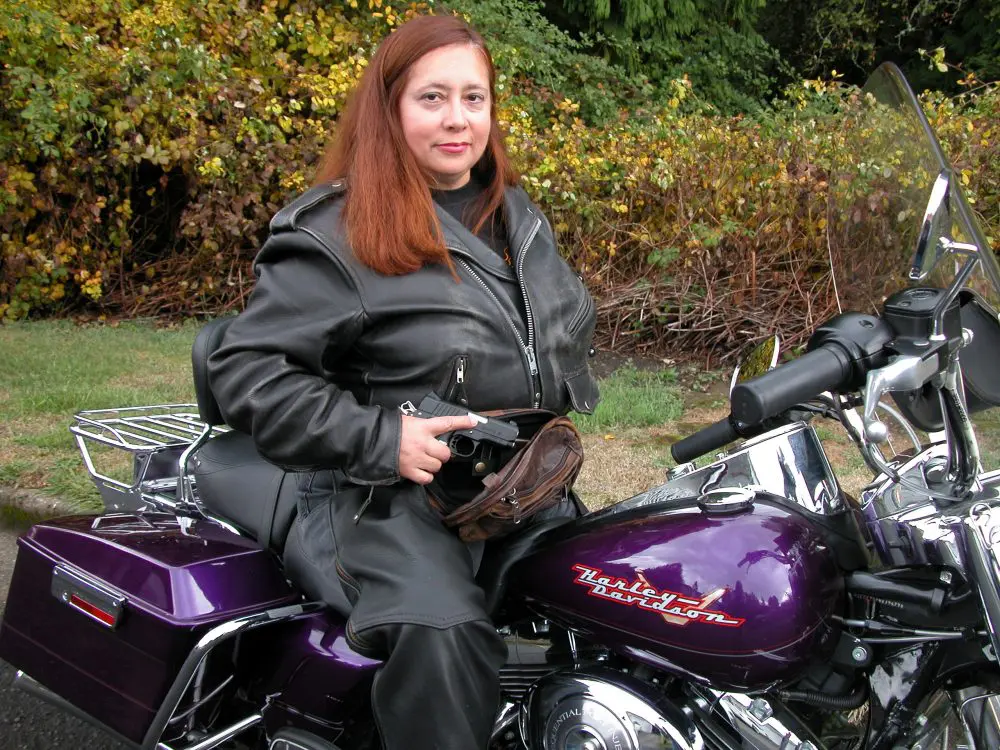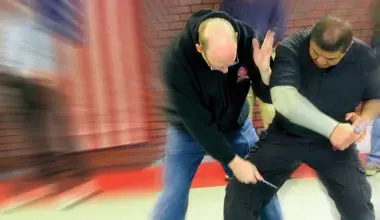

I attend firearms training as much as I can, most recently Degrata Tactical’s Defensive Carbine course at the CorBon Law Enforcement Training Center (CLETC) in Sturgis, South Dakota. Both the training center and the carbine course were very interesting—not just for the lessons, but also the facility and most of all the people.
Table of Contents
CLETC
The who’s who of CorBon were at this course: Peter and Elaine Pi, co-owners of CorBon, son Dane Pi, and Jeff Call, the company’s newly hired Chief Operating Officer.
Peter Pi, best known for his CorBon ammunition company and Glaser Safety Slugs, is a self-described “training junkie” and also an experienced law enforcement officer. It’s obvious where the drive and passion for CLETC come from.
CLETC is a recent addition to the CorBon facilities, having opened in late 2011. When a nearby stone quarry on the south side of Interstate 90 from Sturgis became available, CLETC was born. CLETC includes a pro shop, residence and range. The pro shop features a full line of products for shooters, plus offices and classrooms. The residence is scheduled to be temporary quarters for instructors and students.


The range facility is simple but effective. One side is the “passive” side, with benches and fixed targets with bullet barriers for shooting up to 25 yards. The other side is the “active” side and includes steel targets and barricades. A brick wall separates the two sides.
The active side is open to interpretation, with distances up to 50 yards available. The active range encourages movement and experimentation. Near the divider are paper target holders, while farther away, a variety of steel targets await. As the far side of the active range is bermed at a 90-degree angle— creating a portion of the range with two sides—shooting at steel can be done at over 90 degrees.
A unique feature is large ports or windows in the dividing wall. The windows are covered when the two halves of the range are in use. When open and the range turned 90 degrees, it is used as a single range and distances are opened to 300 yards. A nearby field is used for precision rifle courses.
CLETC is very community conscious. Shooting on Sunday is limited to after church hours. Although training time is reprogrammed for classroom or non-shooting topics, attending weekday training is another option. I found CLETC to be different for another reason: it’s open to other professional instructors. Many facilities limit themselves to their own programs, but CLETC, by design, is used by numerous instructors who present their own courses. The course I attended was hosted by CLETC and instructed by Degrata Tactical.
DEGRATA TACTICAL
Degrata Tactical is a local Sturgis training company. Wade Deuter is the boss and lead instructor. Wade has been in the training business since 1996, and is also a reserve patrolman, SRT member, and trainer for the Sturgis Police Department.
When asked how long he’s been with Sturgis PD, Wade replies, “I’ve done eight rallies.” Sturgis PD talks in terms of the famous annual Sturgis Motorcycle Rally, which is a lot of experience in a very short period of time. In addition to service with other South Dakota agencies, Wade has spent five years as an adjunct instructor at the state academy in Pierre.
As a veteran law enforcement officer, I am used to certain protocols when it comes to firearms training. Wade both surprised and impressed me. “Pointing a gun at each other is ‘inoculation’ for the real world,” Wade opened the course. “Done correctly and safely, of course.”
I could hear hearts stop for probably every law enforcement firearms instructor I have ever known. And interestingly enough, the course got better from there.
The Defensive Carbine course is a bridge between civilian and law enforcement level training. The course description stated that this was not a basic course, but I found Wade flexible enough to accommodate a near-novice shooter and yet safely and efficiently conduct a near-advanced course.

DEFENSIVE CARBINE
I found the Degrata Defensive Carbine course to be typical in content: gear, teamwork, communications, point shooting, reloads, individual tactical movement, malfunctions, unconventional shooting positions, and related topics. After all, how much is there to say about the defensive carbine? It was not so much what was said as how it was said.
After some brief classroom administrative details, it was out to the nearby range. I liked Wade’s first step, the Assessment Drill. Having been there and done that, I know how important it is for an instructor to quickly get a feel for the students’ understanding of training competencies. That is exactly what Wade accomplished. A quick shooting exercise demonstrated student competencies and the nature of our equipment.
Back in the classroom, Wade point ed out that the entire course was high stress and he expected a lot of teamwork, not only in the training role on the range, but also students bringing their own unique experiences to the course. Not surprisingly, Peter Pi beamed upon learning this.
Wade led discussions in the classroom, where he also demonstrated equipment and many basic techniques. Due to a very large indoor training space, students were able to conveniently learn and begin to practice the skills as they were presented. This was also good because South Dakota was experiencing its first cold weather of the season.
WHO’S BUYING WHAT WADE’S SELLING?
At one point in the course of shooting, I looked up to see Wade in front of the line and off to one side. In virtually any training program in the country, a ceasefire would have been called and the person in front of the line would have been politely escorted off the range.
I asked Wade about his position in relation to the firing line, and he replied, “I’m not afraid of being in front of a gun, as long as it is not pointed at me.”
For readers who may not be as familiar with shooting ranges and firearms training programs, this attitude is found in very few training programs. I found it to be very refreshing and I was completely comfortable with his approach. Training proceeded with this mindset and rapidly included students shooting and advancing during fire and movement drills.
I had the most fun with the many drills that involved shooting and moving. All movement drills heightened the overall level of stress. One drill had two-man student teams moving forward from barricade to barricade with covering fire and communications. There were four barricades set from 50 to about 25 yards, with two separate groups of steel targets. Communicating moves, one student would move to the next barricade while the other student provided covering fire. At each barricade, the student was encouraged to use cover to reduce exposure to potential counter fire.
As this was a high-volume drill, reloads were part of the game. Students not shooting acted as safety observers by escorting the shooters through the drill.
In summary, South Dakota is a great place to visit, with attractions such as Mount Rushmore, historic Deadwood, and Harley Davidson Motorcycles. But I would return mostly for CLETC.
CorBon has a great idea with an open training facility. The Pi family should be saluted for their vision and devotion to others. For a small company, Degrata Tactical is pushing the limits in the right direction.
Wade Deuter summarized my feelings about CLETC and Degrata exactly when he said, “It’s all about saving lives.”





